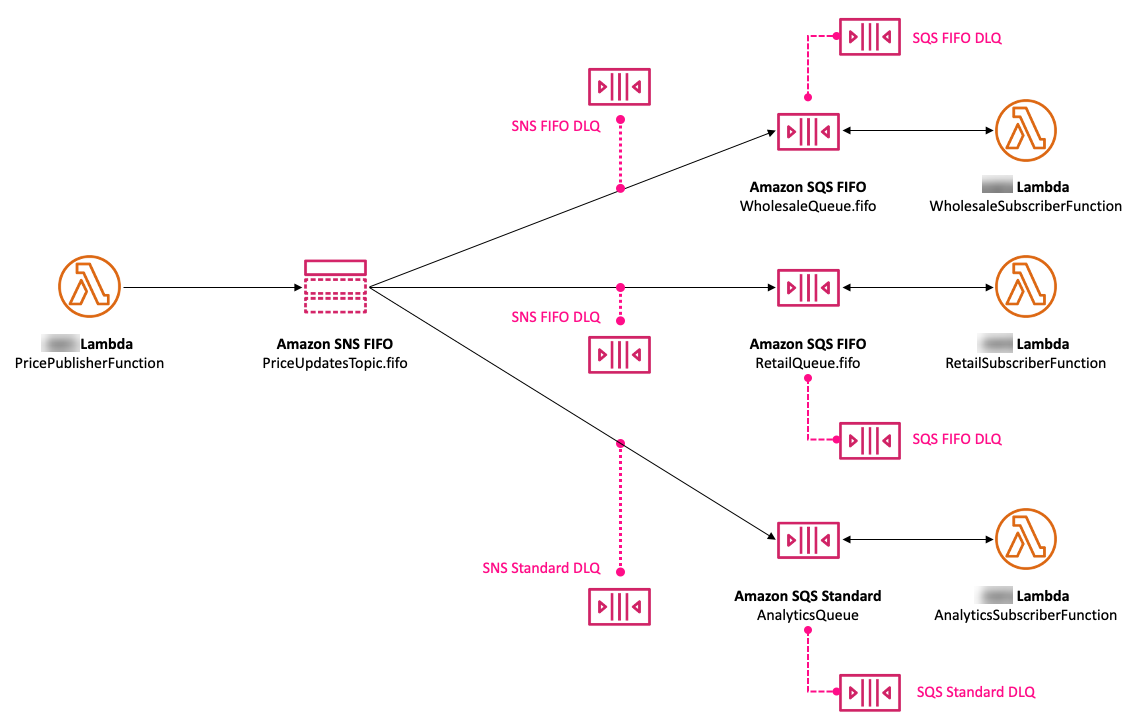Amazon SNS message durability for FIFO topics
Amazon SNS FIFO topics and Amazon SQS queues are durable. Both resource types store messages redundantly across multiple Availability Zones, and provide dead-letter queues to handle exceptional cases.
In Amazon SNS, message delivery fails when the Amazon SNS topic can't access a subscribed Amazon SQS queue due to a client-side or server-side error:
-
Client-side errors occur when the Amazon SNS FIFO topic has stale subscription metadata. Two common causes of client-side errors are when the Amazon SQS queue owner does one of the following:
-
Deletes the queue.
-
Changes the queue policy in a way that prevents the Amazon SNS service principal from delivering messages to it.
Amazon SNS doesn't retry delivering messages that failed due to client-side errors.
-
-
Server-side errors can occur in these situations:
-
The Amazon SQS service is unavailable.
-
Amazon SQS fails to process a valid request from the Amazon SNS service.
When server-side errors occur, Amazon SNS FIFO topics retry the failed deliveries up to 100,015 times over 23 days. For more information, see Amazon SNS message delivery retries.
-
For any type of error, Amazon SNS can sideline messages to Amazon SQS dead-letter queues so data isn't lost.
In Amazon SQS, message processing fails when the consumer application fails to receive the message, process it, and delete it from the queue. When the maximum number of receive requests fail, Amazon SQS can sideline messages to dead-letter queues so data isn't lost.
In the auto parts price management example use case, the company can assign an Amazon SQS dead-letter queue (DLQ) to each Amazon SNS FIFO topic subscription, as well as to each subscribed Amazon SQS queue. This protects the company from any price update loss.

The dead-letter queue associated with an Amazon SNS subscription must be an Amazon SQS queue of the
same type as the subscribing queue. For example, the Amazon SNS FIFO subscription for an Amazon SQS FIFO
queue must have an Amazon SQS FIFO queue as the dead-letter queue. Similarly, the Amazon SNS FIFO
subscription for an Amazon SQS standard queue must have an Amazon SQS standard queue as its dead-letter
queue. For more information, see Amazon SNS dead-letter queues and the Designing durable serverless apps with DLQs for Amazon SNS, Amazon SQS, Amazon Lambda
For extended durability to assist in recovery from downstream failures, topic owners can also use FIFO topics to archive messages up to 365 days. Topic subscribers can then replay those messages to a subscribed endpoint to recover messages lost due to a failure in a downstream application, or to replicate a state of an existing application. For more, see Amazon SNS message archiving and replay for FIFO topics.